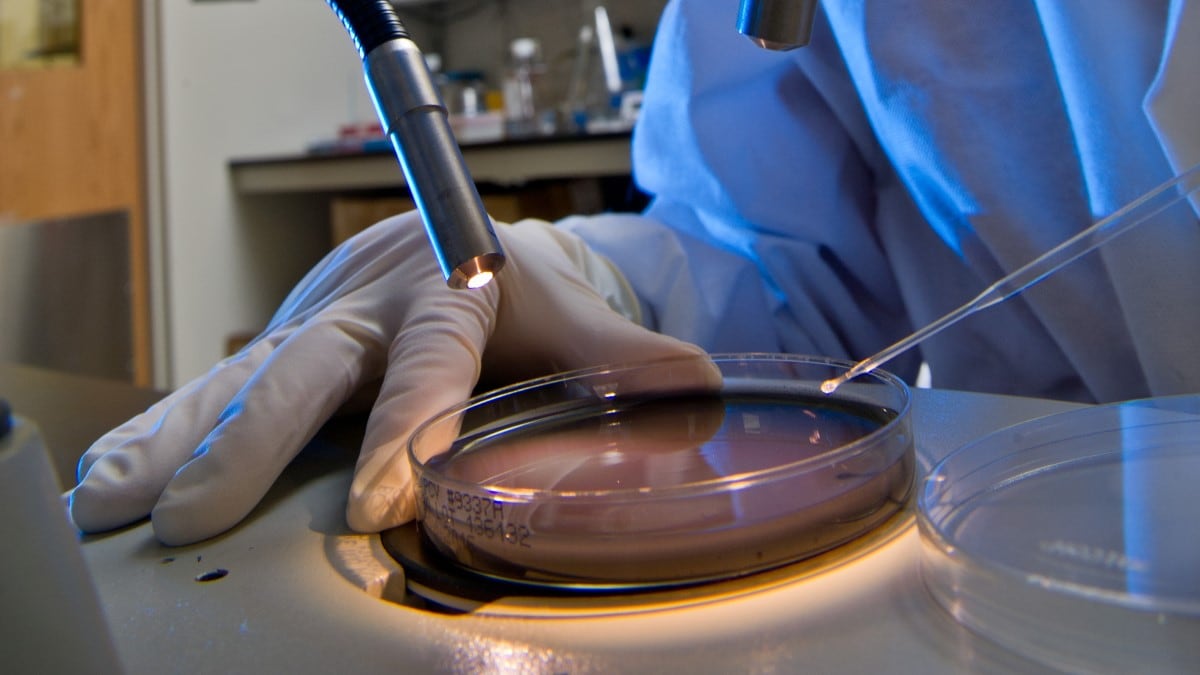Key points
- CDC recommends clinical culture and Legionella urinary antigen testing together.
- It's important to test possible environmental sources for Legionella during outbreaks.
- Environmental sampling should inform remediation and follow-up testing should validate effectiveness of activities.
- Molecular comparisons of the clinical and environmental isolates help confirm the source of the outbreak.

Preferred tests
Diagnostic (clinical) specimens
The preferred diagnostic tests for Legionnaires' disease are both of the following paired together:
- Culture of lower respiratory secretions
- Legionella urinary antigen test
Best practice is to obtain specimens for both lower respiratory culture and the urinary antigen test concurrently.
Environmental samples
The following tests can be used on environmental samples collected during public health investigations
- Culture
- Polymerase chain reaction (PCR)
If PCR is used, CDC recommends primarily using it to screen and prioritize large numbers of samples for culture.
Planning guidance
Legionnaires’ disease outbreaks can present unique challenges for state and local public health laboratories. During a Legionnaires' disease outbreak investigation, laboratories may suddenly be faced with processing hundreds of samples. Laboratory staff can increase their preparedness by developing a Legionnaires' disease laboratory response plan.
Considerations for selecting another laboratory
Proficiency and accreditation
Does the laboratory have documentation of successful performance from a proficiency test program, such as the ELITE Program?
Is the laboratory accredited by a national program for environmental testing?
Methodology
Does the laboratory routinely perform culture for Legionella?
What level of identification (species/serogroup) can the laboratory perform?
Is the laboratory willing to save samples and isolates? If so, will it share them with public health laboratories if requested during an outbreak investigation?
Importance of subtyping and comparing isolates
Subtyping
Legionella is a diverse genus, although L. pneumophila serogroup 1 causes most cases of Legionnaires' disease. During an investigation, it's common to find more than one type of Legionella in several possible sources.
Identifying Legionella strains other than the presumptive outbreak strain through environmental sampling is evidence that conditions support Legionella growth.
Comparing isolates
Most state laboratories are able to provide identification of Legionella to the species and serogroup level (if L. pneumophila). It's necessary to characterize Legionella found in the environment to help confirm the source of the outbreak. Commercial laboratories may be able to determine the species and serogroup.
Molecular comparisons of Legionella isolates recovered from clinical specimens and possible environmental sources are useful aspects of Legionnaires' disease outbreak investigations. In particular, genome sequence data can provide high-resolution information on the relatedness of isolates. Combined with patient exposure information, these data can further support the identification of a specific environmental source.
Resources
Environmental Legionella Isolation Techniques Evaluation Program
Laboratories are able to test their proficiency at isolating Legionella from simulated environmental samples. This program issues documentation to those who pass the proficiency test.
- Murdoch DR. Diagnosis of Legionella infection. Clin Infect Dis. 2003;36:64–9.
- Mercante JW, Winchell JM. Current and emerging Legionella diagnostics for laboratory and outbreak investigations. Clin Microbiol Rev. 2015;28:80–118.
